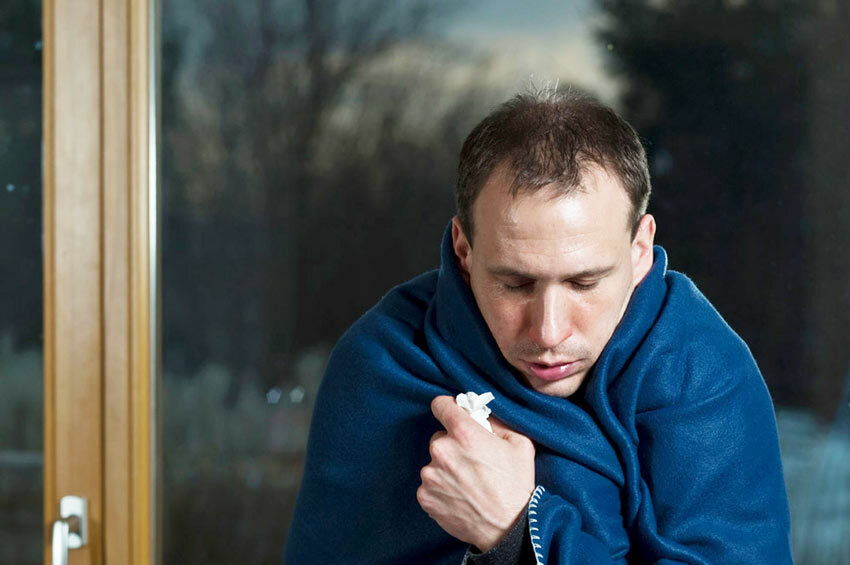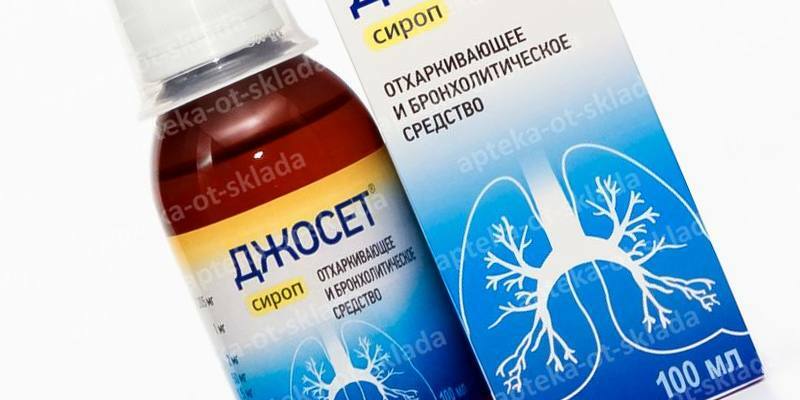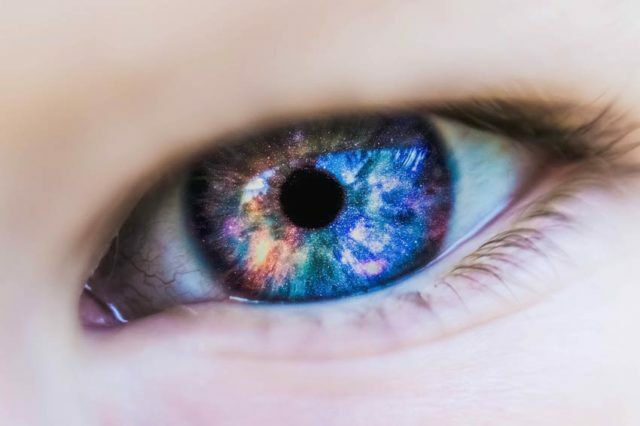 Photo: myopia in preschool and school age children
Photo: myopia in preschool and school age children Contents of the page
- 1 Nearsightedness in children - causes of
- 2 How is the formation of vision in children?
- 3 Kinds of nearsightedness in children
- 4 Symptoms of myopia in children
- 5 Treatment of
- 6 Hardware therapy
- 7 Exercises for eyes with near-sightedness in children
- 8 See video: Myopia in children. How to stop the deterioration of vision. Why myopia is progressing.
- 9 Feedback on the treatment of
Myopia in children is a visual defect in which light rays from distant objects are focused not on the retina of the eye but in front of it, which causes a loss of image clarity. As a result, the child sees well at close range, while distant objects seem to him blurred.
In pediatric ophthalmology, myopia( nearsightedness) is the most common pathology and to date it is found in almost every 4 children. Most often, the development of myopia is observed at school age, which is explained by increased visual load. And if in 6-7 years myopia is diagnosed in 10% of cases, then by the end of the school half of graduates already have problems with vision.
Myopia in children - the causes of
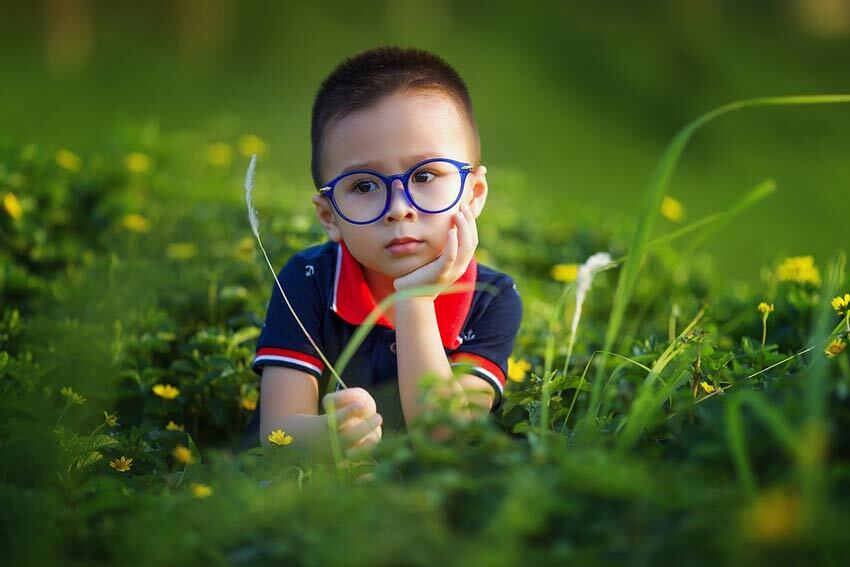 Photo: Myopia in children
Photo: Myopia in children Myopia in children can develop under the influence of a number of provoking factors:
- Hereditary predisposition. As a rule, the probability of developing myopia increases significantly in children whose parents( one or both) suffer from myopia. Such children from birth need the supervision of an ophthalmologist.
- Congenital eye anomalies. Children can be born with various anomalies of the cornea or lens, increased extensibility and weakness of the sclera. Not uncommon and such a condition as congenital glaucoma. In the future these pathologies can provoke the development of myopia.
- Prematurity. According to medical statistics, in nearly 30% of premature infants, myopia( nearsightedness) was subsequently diagnosed.
- Chronic diseases, foci of infection in the body can give impetus to the development of myopia. Among them, diseases of the nasopharynx and oral cavity( sinusitis, adenoids), anomalies in the development of the maxillofacial system or infectious diseases( measles, scarlet fever, diphtheria, etc.).
- Genetic pathologies( Down's syndrome and Morfan syndrome).
- Unbalanced nutrition, lack of important vitamins and trace elements in the diet.
- Decreased immunity. Myopia often develops in weakened, often sick children, with low immunity.
Myopia in school-age children causes the following reasons:
- Increased visual load;
- Excessive enthusiasm for computer games, modern technical novelties( smartphone, tablet).To focus the eyes on a close object( page of the book, computer monitor) the child reflexively strains his eyes. Constant, prolonged stress leads to a change in the shape of the eyeball and the development of myopia.
- Impairment of vision hygiene. This definition means insufficient illumination of the workplace, incorrectly selected furniture, violation of posture during the training process, reading in transport, etc.
 Photo: Nearsightedness in school-age children
Photo: Nearsightedness in school-age children The increase in cases of myopia at school age is associated, first of all, with high training loads, when a child after school at school must sit for hours on his homework. Therefore, the parents' task is to correctly organize the child's day regimen, to teach him to alternate visual loads with physical activity, it is imperative to take breaks every 30-40 minutes to give the eyes a rest.
Prolonged tension is a real stress for a still weak visual system, high loads lead to the fact that the eye muscles cease to relax and return to their original position. This condition of the physician is called "spasm of accommodation" or false nearsightedness.
It is most often formed in schoolchildren due to poor lighting of the workplace or too close tilt of the head over the textbook. If the pathology is detected in time and measures are taken to remove it, the false myopia in children is easily cured. Otherwise, the eye will have to adjust to prolonged high loads and myopia from false, soon become true.
How is the formation of vision in children?
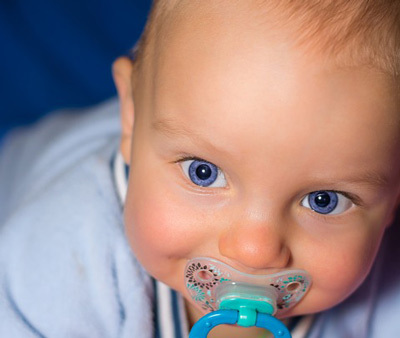 Almost all full-term infants( 80-90%) have a so-called "farsighted vision" at birth, which is +3. 0 - +3.5 diopters. This condition is explained by the fact that the newborn has an anteroposterior size of the eyeball is still very short( 17-18mm).The development of the visual apparatus occurs simultaneously with the child's growing up. Intensive growth of the eyeball begins at the age of 3 years, and its final formation is completed by 10 years. Thus, hyperopia is a normal phenomenon for young children.
Almost all full-term infants( 80-90%) have a so-called "farsighted vision" at birth, which is +3. 0 - +3.5 diopters. This condition is explained by the fact that the newborn has an anteroposterior size of the eyeball is still very short( 17-18mm).The development of the visual apparatus occurs simultaneously with the child's growing up. Intensive growth of the eyeball begins at the age of 3 years, and its final formation is completed by 10 years. Thus, hyperopia is a normal phenomenon for young children.
Gradually, hyperopia( hypermetropia) decreases and approaches normal refraction. But in some cases, with insufficient "farsightedness"( less than +2.5 diopters), the probability of developing myopia increases in the future, as the normal growth of the eyeball is disrupted. Another physiological reason is the elongated( ellipsoidal) shape of the cornea, which too strongly refracts the image and it is projected not on the retina, but in front of it, which makes the distant visual images blurred.
Kinds of nearsightedness in children
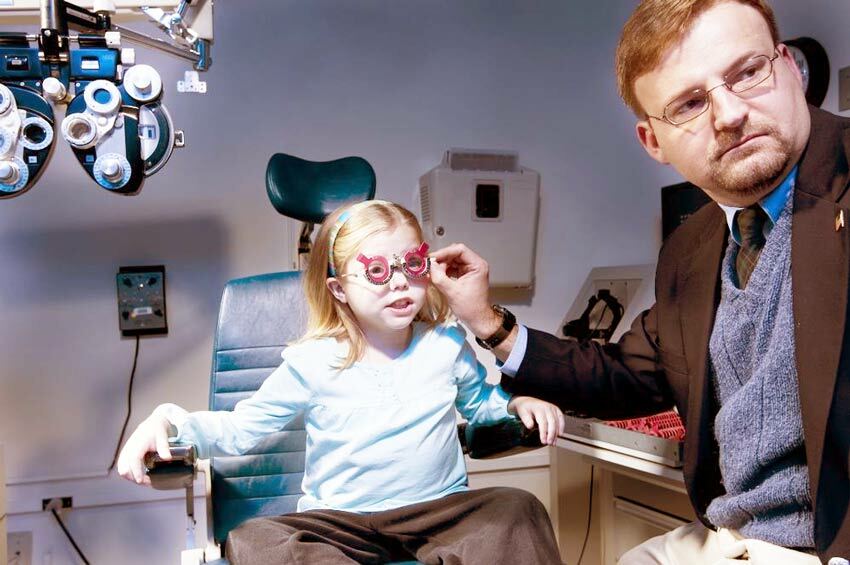 Photo: Kinds of nearsightedness in children
Photo: Kinds of nearsightedness in children By the nature of development of myopia in children it is common to divide into:
- Congenital, associated with pathologies of the structure of the eye and immaturity of the visual apparatus.
- Acquired, developing due to eye strain, improper organization of the workplace, hobby computer or TV.
In addition, the specialists distinguish the following subspecies of myopia:
- Physiological. Develops in the process of growth and development of the eye. After the formation ends and the eye acquires the final dimensions, the progression of myopia ceases. This kind of myopia is referred to as stationary, because it does not lead to a significant loss of vision.
- Pathological. Refers to a progressive form of the disease, in which the drop in vision can reach several diopters per year. This is due to the excessive growth of the eyeball in length. This form of myopia is considered to be the heaviest and often ends in disability.
- Lenticular. Characterized by an excessive increase in the refractive power of the lens and changes occurring in its nucleus. Most often accompanies such pathologies as congenital central cataracts, diabetes mellitus or develops after treatment with certain medications.
- False myopia. Develops due to excessive strain on the eyes. With timely detection, it is easily amenable to correction.
Depending on the mechanism of formation myopia happens:
-
 Photo: Mixed myopia
Photo: Mixed myopia Axial. It is characterized by an increase in the length of the eyeball( up to 25 mm and above) while maintaining the normal refractive properties of the lens.
- Refractive - in this case, the lens core changes, but the shape of the eye shell is not violated.
- Mixed - this form is characterized by simultaneous presence of axial and refractive pathology.
In myopia, there are three degrees of severity of the disease:
- Weak( up to -3 diopters);
- Average( from 3.25 to 6 D);
- High( from 6.25 D).
Symptoms of myopia in children
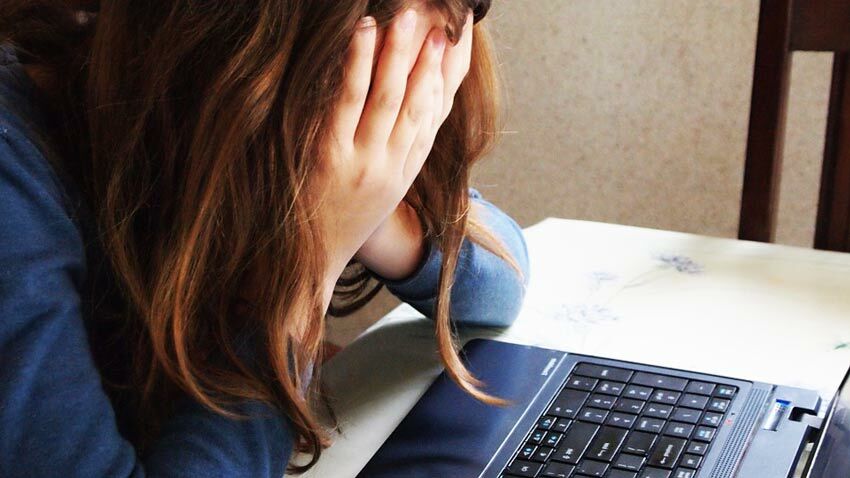 Photo: Symptoms of myopia in children
Photo: Symptoms of myopia in children Children can not always understand that their eyesight deteriorates. What signs should parents pay attention to in order to capture pathology at the initial stage of development?
- the child complains of a headache, dizziness;
- quickly gets tired when reading;
- often blinks, rubs eyes;
- squints when trying to view distant objects or while watching TV;
- tilts the head too low in the process of drawing or writing;
- keeps a textbook or book close to the face.
Disturbing signs are clearly visible in preschool children and schoolchildren, but what if the child is still very young and can not tell his parents about what's bothering him? In order to identify possible visual defects, all children under the age of one year should undergo scheduled examinations at an ophthalmologist at the age of 3, 6 and 12 months.
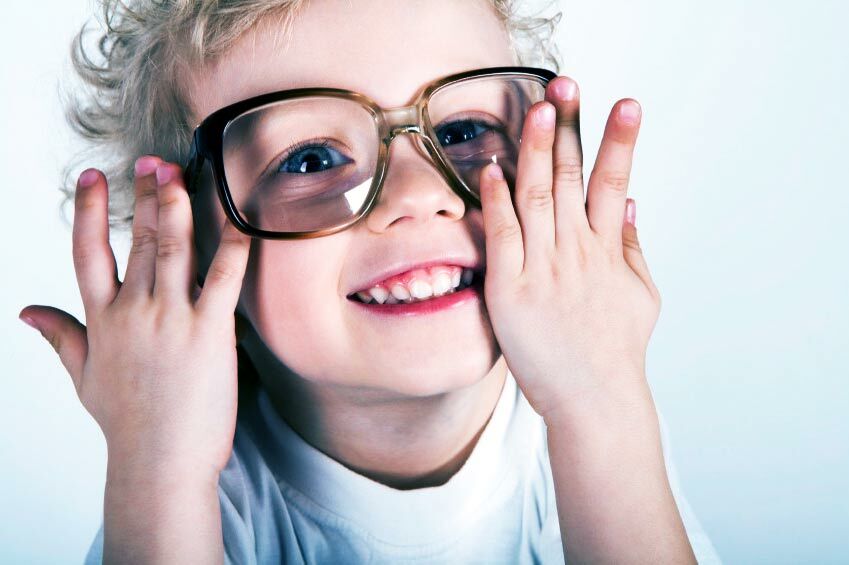 Photo: Nearsightedness of a child in 3 years
Photo: Nearsightedness of a child in 3 years Myopia in 3 years old can already be determined using special tables. While the kid is not already familiar with the letters and can not read, he is shown posters with pictures. Parents should be alerted and show the child to the doctor, if he brings objects too close to his eyes, often blinks and blinks. If violations are detected, the specialist will select eyeglasses for correction of vision.
Myopia in a child of 5 years old parents can already determine by themselves. All of the above symptoms at this age are well manifested. In addition, the baby himself can voice his complaints and tell his parents about what's bothering him.
Diagnostic methods
To clarify the diagnosis, an ophthalmologist will perform an examination and a necessary examination of the condition of the visual function of the baby.
At visual inspection the doctor necessarily will pay attention to size, the form and position of eyeballs, ability to fix a sight on bright toys. The use of such methods as ophthalmoscopy and biomicroscopy will give an idea of the condition of the cornea, the lens, the fundus, the anterior chamber of the eye.
The doctor may use additional methods of investigation: refractometry, skiazcopy or ultrasound of the eye. To exclude such a condition as false myopia, determine the volume and supply of accommodation. If violations are detected, a child's consultation with a neurologist is necessary, since false myopia is often accompanied by increased nervous excitability, asthenia and vegeto-vascular dystonia.
Treatment of
 Photo: Treatment of myopia in children
Photo: Treatment of myopia in children For the treatment of myopia in children, a whole range of methods is used. Among them, drug therapy, hardware, optical and physiotherapy methods of therapy.
The tactics of treatment for myopia largely depends on how the disease develops, how fast myopia progresses, whether there is a threat of complications. If during the year the vision deteriorates insignificantly( no more than 0.5 D), expectant tactics are possible.
Optical correction
After the diagnosis is clarified, the ophthalmologist will select the glasses for correction of vision for a small patient, older children may be recommended to wear contact lenses. Many parents are interested in whether to wear glasses to children with myopia? With a weak and moderate degree of myopia, constant wearing is not required( they are used only for distance).
With a high degree of myopia or rapid disease progression, glasses should be worn constantly to prevent such a serious complication as amblyopia. Contact lenses are best suited to eliminate anisometropia, when the difference in refraction between the eyes reaches 2 or more diopters.
Drug methods
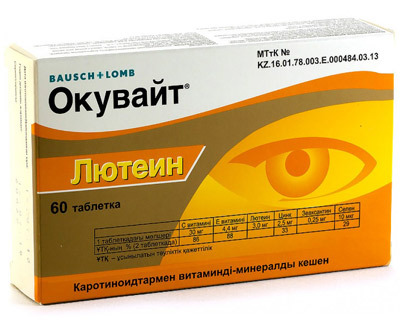 Photo: Medical methods
Photo: Medical methods With a weak degree of myopia, the child will be prescribed vitamin complexes containing vitamins and minerals necessary for the eye. Especially useful are drugs with lutein( Okuvait, Vitrum Vision).The progression of the disease will help stop drugs with nicotinic acid, in the absence of hemorrhages, Trental is often prescribed.
Another frequently used drug is the eye drops Irifrin. Their action is aimed at reducing intraocular pressure by reducing the volume of intraocular fluid. If dystrophic processes in the fundus are detected, drugs are prescribed:
- Ascorutin,
- Vikasol,
- Emoxipine
These drugs prevent the development of anomalies and normalize the blood supply to the retina. With false myopia the child needs the means that can relax the ciliary muscle of the eye and eliminate its spasm. To this end, prescribe eye drops with atropine.
Among the alternatives are the popular Oko Plus drops. It is a completely natural product based on lutein, carnosine and vegetable components( clover juice and barley milk).The use of drops helps to relieve visual tension, reduce intraocular pressure, prevent complications such as glaucoma and cataract.
 Photo: Oko plus
Photo: Oko plus The efficacy of Oko plus is very high, according to the patients' reviews, it is an excellent alternative to laser vision correction, since it helps actively counteract the development of myopia and from the first days of application it starts the recovery processes in the visual apparatus.
In any case, the optimal scheme of treatment for a child should be selected by a doctor. Only the specialist can correctly assess the degree of severity of myopia and prescribe the appropriate drugs. The natural drops for the eyes are OK. OKO-plus - http: //glavvrach.com/ oko-plyus /
Hardware therapy
The hardware treatment is designed to restore accommodation with a low degree of myopia and prevent its further progression. In pediatric ophthalmology, the following methods are used:
- Vacuum massage - improves blood circulation, normalizes the functioning of the ciliary muscle and restores the hydrodynamics of the eye.
- Electrostimulation. It is used for atrophic processes in the optic nerve. The procedure is based on the action of low-intensity currents, which is aimed at restoring conductivity with a weak degree of myopia and returning object orientation in more severe cases.
- Amblykor - the procedure activates the activity of neurons in the visual cortex and effectively improves vision.
- Infrared laser therapy - the essence of the method lies in the impact on the eye of infrared radiation from a close distance, which improves nutrition and blood supply to the eyes and eliminates spasm of accommodation( false myopia).
- Laser therapy - stimulates the receptors of nerve endings of the retina, improves spatial perception.
Physiotherapy methods
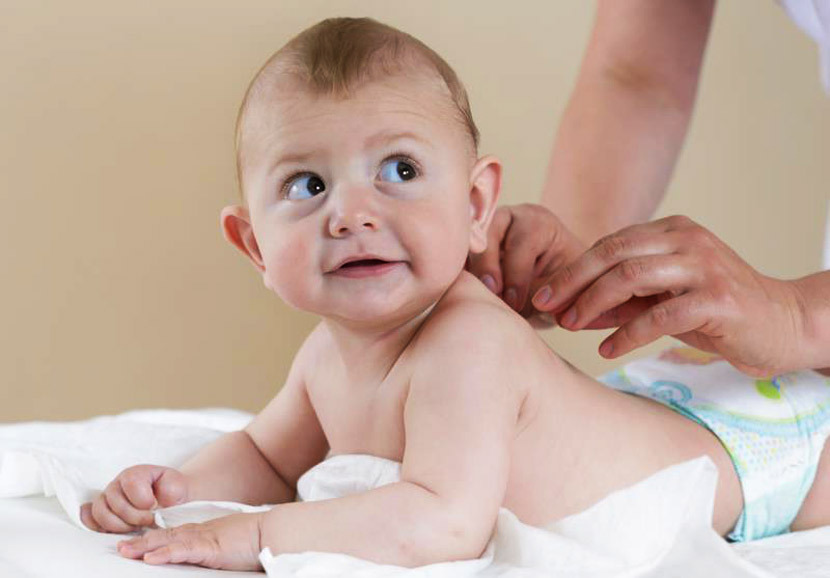 Photo: massage of the collar zone
Photo: massage of the collar zone Complex treatment of myopia includes methods of physiotherapy. The most common of these are:
- electrophoresis;
- massage of the collar zone;
- acupuncture.
In addition to the main methods of treatment, an ophthalmologist will recommend adjusting the regime of the day, balancing the diet, organizing the student's workplace correctly, spending more time outdoors, and not at the computer or TV.In addition to the main therapy, the child will be recommended to do gymnastics for the eyes.
Eye Exercises for Nearsightedness in Children
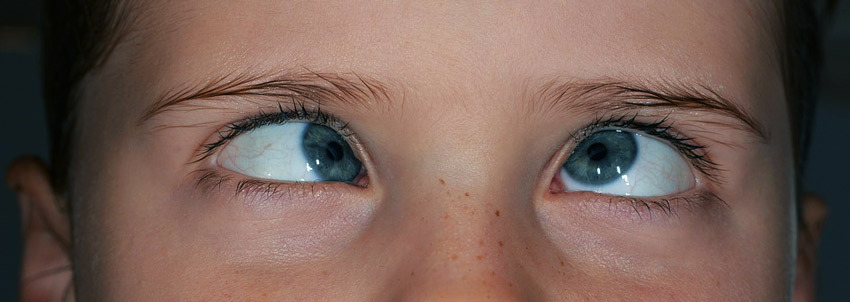 Photo: Eye Exercises for Nearsightedness in Children
Photo: Eye Exercises for Nearsightedness in Children At home, the child can learn simple gymnastics for the eyes using Avetisov's method:
- very slowly translate the view to the right and left and back( 10 times);
- to direct the view to the right - up, then left-down and back( 10 times);
- make a circular motion with eyes clockwise, then against( 5 times);
- slightly press three fingers on closed eyes( 3 times);
- after the end of the exercise blink eyes( up to 10 times).
Surgical treatment
With the progression of myopia, the absence of the effect of corrective treatment methods and the threat of complications, surgical intervention( scleroplasty) is used. The main indication for the operation is the rapid aggravation of myopia( more than 1 dptr per year).Scleroplasty is performed to prevent further stretching of the sclera of the eyes. Surgical intervention will strengthen the posterior segment of the retina and normalize the blood supply and metabolism in the eye.
In recent years, modern technologies using a laser have been used to eliminate myopia. But laser correction of myopia in a child is possible only after reaching the age of 18 years. Before this age, laser vision correction is not recommended.
Prevention
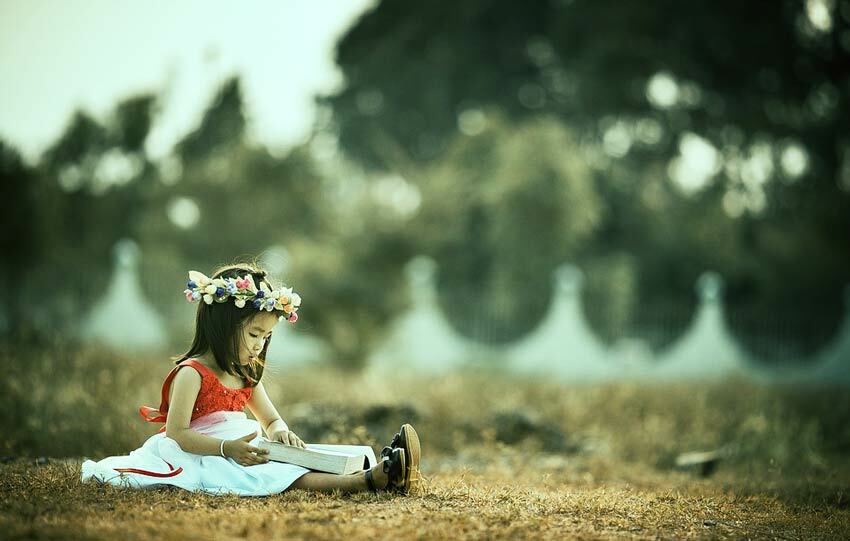 Photo: Prevention of myopia in children
Photo: Prevention of myopia in children Prevent development of myopia in a child, if you adhere to the basic preventive recommendations:
- Observance of visual hygiene. This concept includes the dosage of visual loads, the correct organization of the student's workplace, the exclusion of reading in transport or in poor lighting.
- Watching TV or hanging out at the computer should be limited, visual load alternating with active rest.
- The child should spend more time in the open air, eat fully, observe the regime of the day.
- Children with myopia need to limit the time of watching TV up to 1 hour a day, using a computer - up to 30 minutes three times a week.
- It is necessary to provide the child with a complete diet and include more foods rich in vitamin A. In the spring-autumn season, the baby should be given vitamin complexes.
If a child is found with myopia, it is necessary to observe with an ophthalmologist and to see a doctor every 6 months.
See video: Myopia in children. How to stop the deterioration of vision. Why myopia is progressing.
See video: What is the reason for myopia in children
Feedback on treatment
Testimonial №1
Our daughter learned to read early, already in 5 years did not part with a book. And at school I was excellent up to grade 4.But when I went to grade 5, my grades fell, the girl quickly became tired, reluctantly did homework. As a result, it turned out that she did not see what the teacher wrote on the blackboard during the lesson.
The oculist diagnosed myopia( -1.5 dioprtics) and prescribed glasses for the baby. Now all the problems with studying have been resolved and now for us the main thing is to prevent further fall of view. To do this, we take the vitamin complex with lutein and dig in special drops prescribed by the doctor to relieve tension from the eyes. When the daughter is still a little older, we plan to switch to contact lenses.
Marina, Moscow
Review No.2
My son was diagnosed with myopia( nearsightedness) at 5 years old. The doctor picked up his glasses and advised him to perform a set of exercises for the eyes. Now we are trying to do such gymnastics at home, but the kid does exercises reluctantly, he still does not quite understand what it is for.
Myopia is still in a weak degree and the kid constantly does not wear glasses, wears them only for watching TV.Now we will visit the oculist every six months - the main thing is that myopia does not progress.
Svetlana, St. Petersburg
Review No.3
I had a poor vision in my childhood. From the age of 6 I had to walk with glasses. At school I switched to contact lenses. The disease did not progress, but I wanted to completely get rid of the corrective lenses.
Therefore, after the age of 18, decided to undergo a laser vision correction surgery. Everything went well, now I can see perfectly. I believe that this is the best method of correcting vision.
Ekaterina, Novosibirsk

